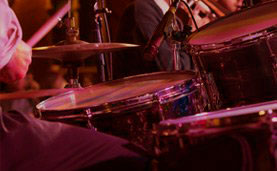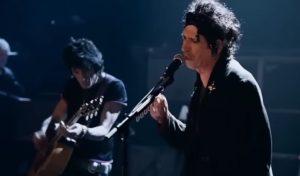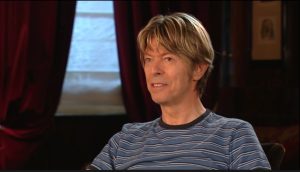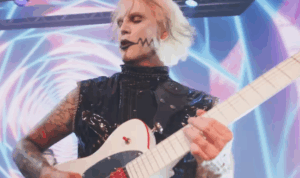10 Most Unforgettable Rock Concerts Ever Caught on Film

LONDON - JULY 13: Freddie Mercury of Queen performs on stage at Live Aid at Wembley Stadium on 13th July 1985 in London. (Photo by Phil Dent/Redferns)
Some concerts transcend the stage and become living documents of rock’s greatest eras. When cameras rolled on these legendary nights, they didn’t just capture music — they preserved cultural milestones that continue to define generations. From massive outdoor festivals to intimate club shows, these performances became timeless not only for their sound but for the way they revealed the spirit, chaos, and rebellion of rock itself.
Concert films have long served as a bridge between artists and audiences who couldn’t be there in person. They immortalized moments of triumph and turmoil, whether it was a frontman’s career-defining roar, a band at the height of its powers, or a farewell show that left fans in awe. Each one offered a rare glimpse into the energy and emotion that can’t be replicated by studio albums alone.
What makes these particular performances unforgettable isn’t just the music — it’s the storytelling behind them. They document eras of change, capture the pulse of cultural revolutions, and remind us why rock concerts remain one of the most powerful communal experiences in modern history. These are the films that didn’t just record rock — they amplified it.
Woodstock (1970)
No other concert film captures the essence of an era quite like Woodstock. Chronicling three days of peace, love, and music in the summer of 1969, the documentary immortalized a generation’s defining moment. With half a million people gathered on a muddy New York farm, it became the ultimate symbol of the counterculture movement — a chaotic yet beautiful snapshot of rebellion and unity.
Directed by Michael Wadleigh and edited with help from a young Martin Scorsese, Woodstock doesn’t just showcase performances — it captures history in motion. The film pulses with energy from Jimi Hendrix’s legendary rendition of “The Star-Spangled Banner,” Santana’s electrifying breakout, and Janis Joplin’s soul-stirring power. Each frame reflects both the music and the movement that shaped an entire decade.
Beyond its music, Woodstock remains a cinematic achievement. It pioneered the use of split-screen editing and created a visual language that concert films would follow for decades. More than 50 years later, it’s not just a record of a festival — it’s the spirit of the 1960s, preserved forever on film.
Queen – Live Aid, Wembley Stadium (1985)
When Queen took the stage at Wembley Stadium for Live Aid in 1985, they didn’t just perform — they made history. In just 20 minutes, Freddie Mercury and his bandmates turned a global charity event into the most legendary live performance ever captured on film. Before 70,000 fans and nearly two billion viewers worldwide, they reminded the world what pure showmanship looked like.
Freddie’s voice and presence transformed the massive venue into something intimate. Every song — from “Bohemian Rhapsody” to “Radio Ga Ga” — became a shared heartbeat between the band and audience. Those synchronized handclaps during “Radio Ga Ga” were more than rhythm; they were communion. It was rock and theater fused into a single, unforgettable moment.
Decades later, Live Aid remains the definitive proof of Queen’s supremacy as a live act. It wasn’t about pyrotechnics or spectacle — it was about connection, charisma, and mastery. Few performances before or since have managed to capture that same lightning in a bottle.
The Beatles – Rooftop Concert (1969)
Few moments in music history are as spontaneous and iconic as The Beatles’ rooftop concert. On a chilly January afternoon in 1969, the band climbed to the roof of Apple Corps headquarters and played what would become their final live performance. It was unannounced, unrehearsed in spirit, and utterly unforgettable.
As Londoners paused in the streets below, John, Paul, George, and Ringo rediscovered the joy that first made them great. Their renditions of “Get Back,” “Don’t Let Me Down,” and “I’ve Got a Feeling” were loose, playful, and alive — the sound of a band reconnecting one last time. The performance captured both the spark of their youth and the melancholy of their impending goodbye.
Let It Be later immortalized the event, transforming it into one of the most bittersweet farewells ever filmed. The rooftop concert wasn’t just an ending; it was a reminder of The Beatles’ unparalleled chemistry — four musicians playing for the simple love of making music together.
Nirvana: MTV Unplugged In New York (1994)
There are few performances more hauntingly beautiful than Nirvana: MTV Unplugged in New York. Filmed just months before Kurt Cobain’s death, the acoustic set strips away grunge’s distortion to reveal the fragile core of Nirvana’s artistry. The candlelit stage, the understated setup, and Cobain’s raw vocals combine to create an atmosphere both intimate and heartbreaking.
Instead of leaning on their biggest hits, the band chose a setlist that defied expectations — from their own deep cuts to covers of Bowie’s “The Man Who Sold the World” and Lead Belly’s “Where Did You Sleep Last Night.” The latter, closing the show, became an epitaph of sorts: Cobain’s voice cracking under the weight of something unspoken.
The performance became more than a TV special; it became a cultural touchstone. MTV Unplugged in New York revealed Nirvana’s depth, vulnerability, and brilliance in a way no stadium concert could. It remains one of the most emotional concert films ever made — a quiet masterpiece that defined a generation’s pain and beauty.
The Song Remains the Same (1976)
Few films capture the power and spectacle of 1970s rock like The Song Remains the Same. Chronicling Led Zeppelin’s 1973 performances at Madison Square Garden, the movie distills the band’s mystique into an experience that feels both mythic and intimate. It’s a time capsule of a group at its creative and cultural peak — where extended solos, thunderous riffs, and theatrical visuals merge into something larger than life.
Directed by Peter Clifton and Joe Massot, the film doesn’t just record the concert; it ventures into fantasy sequences that reflect each member’s persona — from Jimmy Page’s mystical imagery to Robert Plant’s Arthurian grandeur. This surreal blend of reality and imagination elevates the film beyond a simple live document, turning it into an expression of Zeppelin’s larger-than-life identity.
Though critics were divided at the time, The Song Remains the Same has since earned cult status among fans. It embodies the excess, ambition, and electricity that defined the golden era of arena rock. Watching it now feels like stepping into a dream where every note, every light beam, and every guitar scream echoes through rock history.
Gimme Shelter (1970)
If Woodstock was the dream, Gimme Shelter was the wake-up call. The Maysles brothers’ documentary about The Rolling Stones’ 1969 U.S. tour captures the darker side of the era, culminating in the chaotic Altamont Free Concert — an event that ended with violence and tragedy. It’s a chilling portrait of a generation’s ideals unraveling in real time.
The film moves from the Stones’ exhilarating Madison Square Garden performances to the disastrous Altamont Speedway show, where poor planning and the presence of the Hells Angels as security spiraled out of control. Through the camera’s unflinching lens, you witness not just a concert gone wrong, but the moment the peace-and-love era took its final breath.
More than a music film, Gimme Shelter is a documentary masterpiece — a raw collision of art and reality. It doesn’t glorify rock; it exposes its volatility. Decades later, it remains one of the most powerful and unsettling depictions of fame, chaos, and cultural change ever put to film.
Pink Floyd: Live at Pompeii (1972)
Filmed in the haunting ruins of an ancient Roman amphitheater, Pink Floyd: Live at Pompeii redefined what a concert film could be. There’s no audience, no applause — only the band and the echoes of history surrounding them. The result is a mesmerizing, meditative experience that turns rock performance into pure atmosphere.
Director Adrian Maben’s vision strips away the noise of the crowd, focusing instead on the interplay between sound and space. As the band moves through extended versions of “Echoes” and “Careful with That Axe, Eugene,” the music feels almost spiritual — reverberating through stone walls that once hosted gladiators.
It’s both surreal and intimate, capturing Pink Floyd not as rock stars but as artists immersed in sound. Decades before music videos and visual albums became common, Live at Pompeii showed how light, silence, and architecture could transform a concert into a cinematic dream.
U2 – Live at Red Rocks: Under a Blood Red Sky (1983)
Live at Red Rocks marked the night U2 transformed from promising upstarts into stadium superstars. Filmed in the rain-soaked majesty of Colorado’s Red Rocks Amphitheatre, it’s a triumph of spirit over circumstance — a young band facing down a storm and conquering it with sheer conviction. Every drop of rain seemed to amplify the drama rather than diminish it.
From the opening moments of “Gloria” to the defiant roar of “Sunday Bloody Sunday,” the film captures the band’s energy at its most urgent and unfiltered. Bono, drenched and fearless, wields a white flag as if leading a crusade for unity, while The Edge’s chiming guitar cuts through the mist like light through darkness.
Directed by Gavin Taylor, Under a Blood Red Sky became the visual statement of U2’s identity — earnest, emotional, and epic. The imagery of fire and rain against the red cliffs remains one of rock cinema’s most iconic sights, sealing U2’s destiny as one of the defining bands of their generation.
AC/DC – Live at Donington (1991)
There’s raw power, and then there’s AC/DC: Live at Donington. Filmed before 80,000 fans at England’s Monsters of Rock festival, the concert is a thunderous testament to pure, unrelenting rock ’n’ roll. No gimmicks, no theatrics — just Angus Young’s relentless energy, Brian Johnson’s raspy howl, and a crowd that feels like a force of nature.
The performance is a masterclass in precision and chaos coexisting. “Thunderstruck,” “Back in Black,” and “Highway to Hell” explode from the speakers with surgical intensity, yet every note feels spontaneous and dangerous. The band doesn’t just play to the crowd; they dominate it, feeding off its electricity until the entire field becomes one roaring organism.
Shot with stunning clarity and booming sound, Live at Donington remains the definitive AC/DC concert film. It captures the band’s essence better than any documentary ever could — loud, unapologetic, and unstoppable. For anyone who’s ever wanted to feel the ground shake beneath their feet, this is as close as it gets.
Prince – Sign o’ the Times (1987)
Few artists have ever fused music and cinema as seamlessly as Prince in Sign o’ the Times. A vibrant, visionary performance film, it showcases the artist at his creative zenith — blending funk, rock, soul, and theater into something uniquely his own. Every frame pulses with color, rhythm, and sensuality.
The film’s staging blurs the line between concert and narrative. Songs like “I Could Never Take the Place of Your Man” and “U Got the Look” unfold as mini-dramas, choreographed and lit like scenes in a musical. Then there’s “Purple Rain,” delivered with a guitar solo so emotional it borders on transcendence.
Directed by Prince himself, Sign o’ the Times is more than a concert — it’s an experience. It proved that live music could be cinematic without losing its soul, decades before visual albums became a trend. To watch it is to see an artist in total control of his art — and utterly unafraid to turn sound into vision.





















